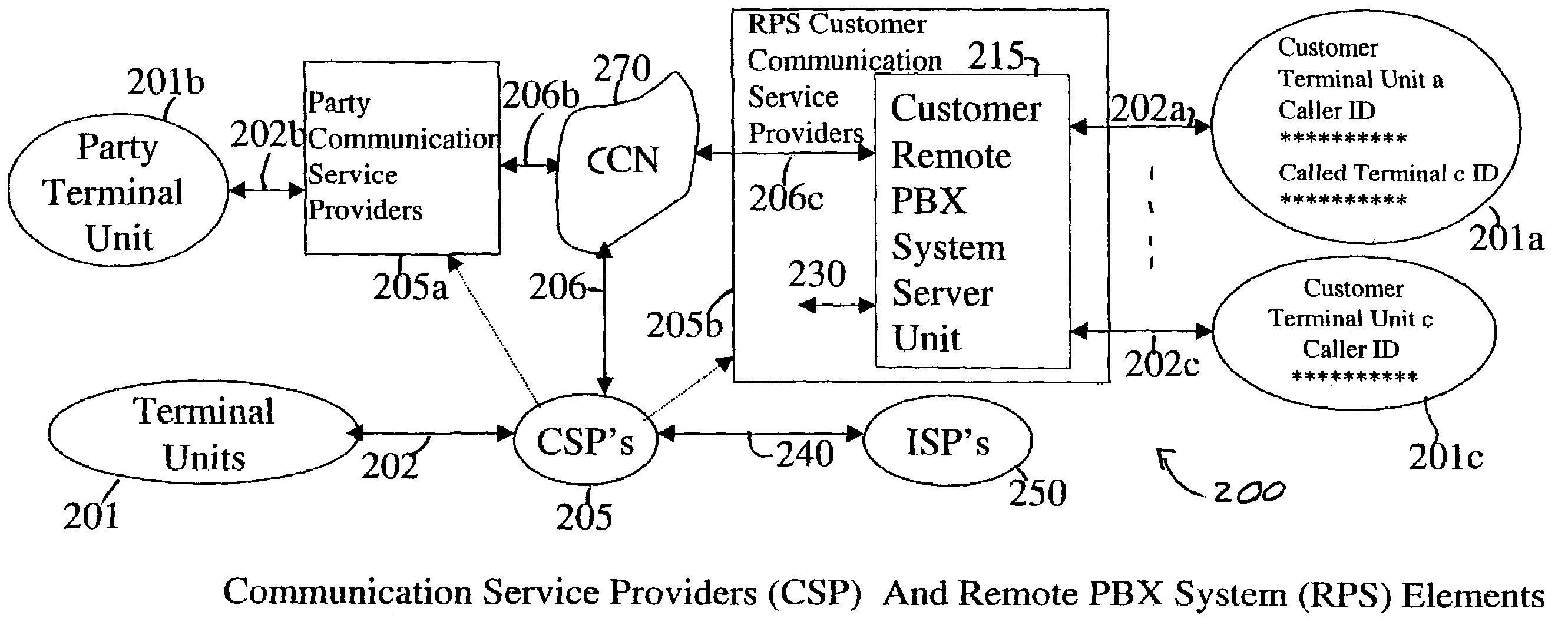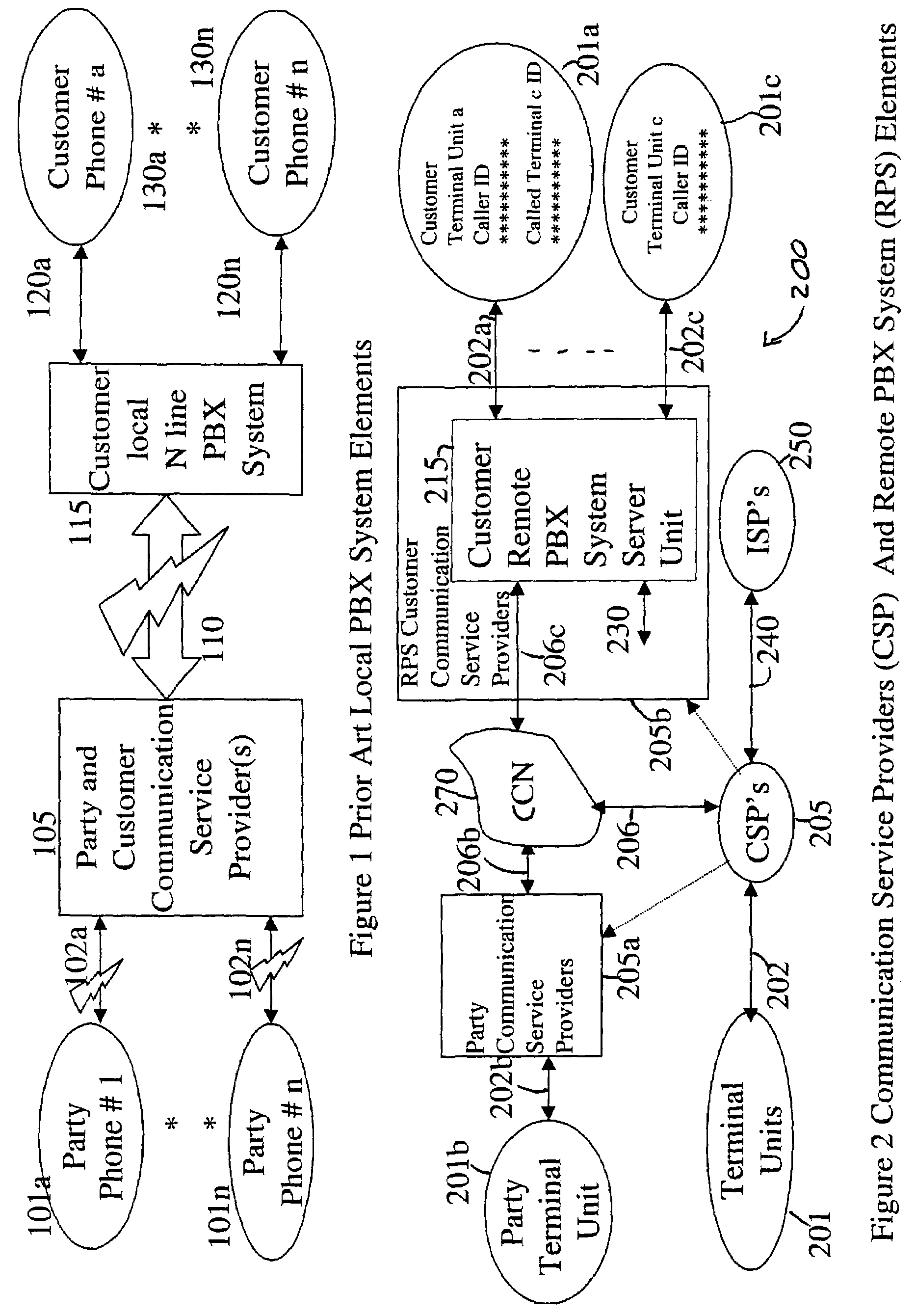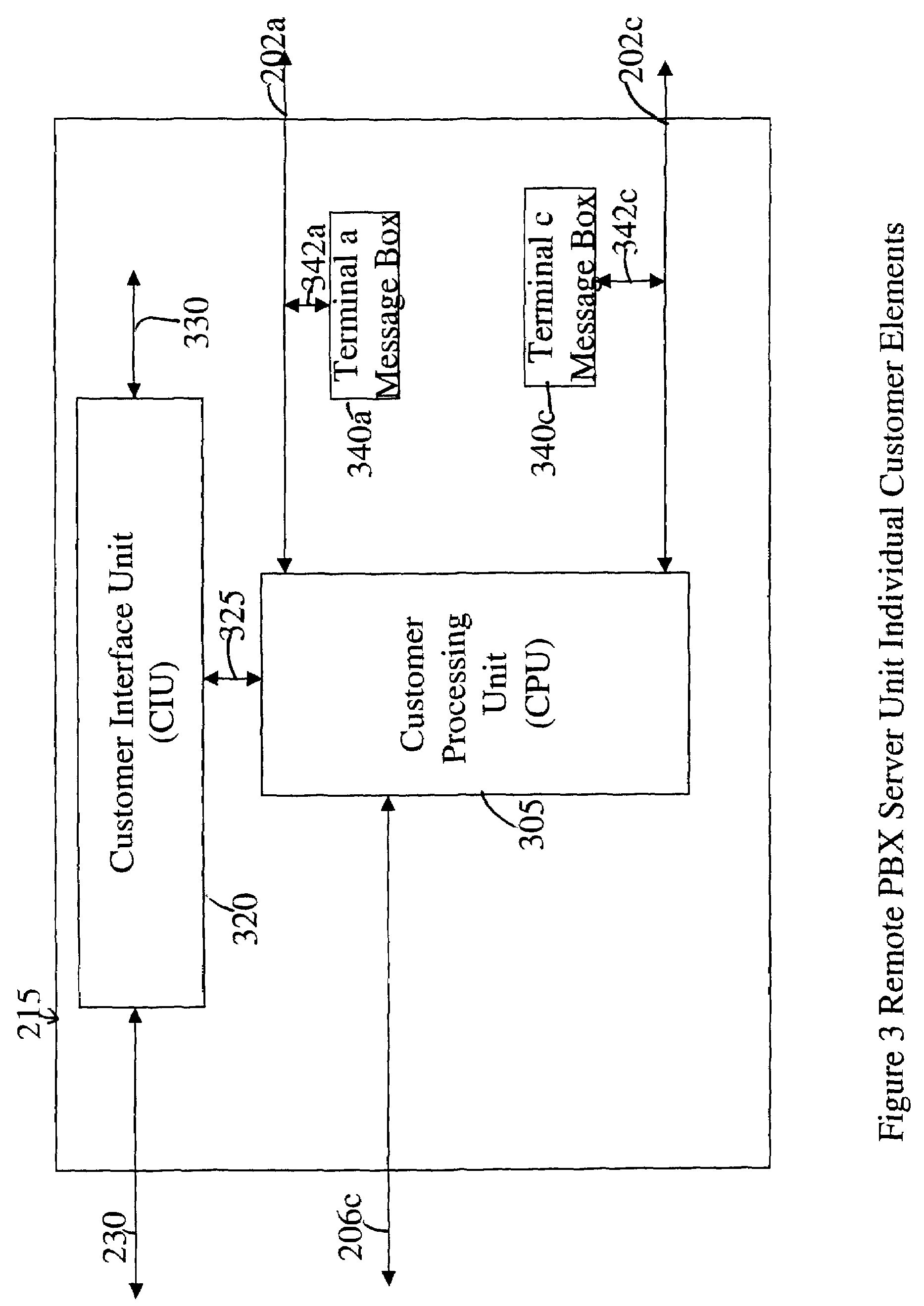Remote PBX system and advanced communication terminals
a communication terminal and remote pbx technology, applied in the field of remote pbx system and advanced communication terminals, can solve the problems of affecting the service life of the system, and reducing so as to increase the cost of the communication operating system a small amount, improve the service life of the system, and improve the effect of customer service provider revenu
- Summary
- Abstract
- Description
- Claims
- Application Information
AI Technical Summary
Benefits of technology
Problems solved by technology
Method used
Image
Examples
Embodiment Construction
1. Definitions
[0030]A “Local Private Branch Exchange System” is abbreviated throughout as “LPS”. The LPS is often referred to simply as a “PBX” in industry and business communities and the major elements of an LPS are shown in FIG. 1. However, since this invention “splits” the “PBX” tasks between a customer local system and a remote computer system, it is important to define the local “PBX” prior art system and services more precisely as an LPS for purposes of clarity. LPS are privately owned (or leased) computer and terminal units and connect to multiple communication lines provided normally by public communication service providers. The LPS is located, for example, at a company office or buildings owned by the company or institution such as a school or government agency. Small LPSs are also available for two- to ten-line service at homes and small businesses. The LPS directs both the incoming connections from the communication service provider and the outgoing connections to the c...
PUM
 Login to View More
Login to View More Abstract
Description
Claims
Application Information
 Login to View More
Login to View More - R&D
- Intellectual Property
- Life Sciences
- Materials
- Tech Scout
- Unparalleled Data Quality
- Higher Quality Content
- 60% Fewer Hallucinations
Browse by: Latest US Patents, China's latest patents, Technical Efficacy Thesaurus, Application Domain, Technology Topic, Popular Technical Reports.
© 2025 PatSnap. All rights reserved.Legal|Privacy policy|Modern Slavery Act Transparency Statement|Sitemap|About US| Contact US: help@patsnap.com



